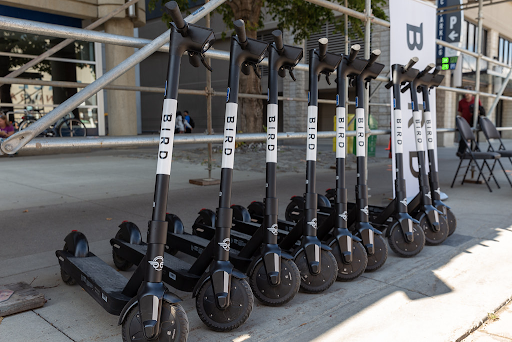The surge in e-scooter popularity has forced policymakers to make regulations that try to balance accessibility and safety. The exact rules governing e-scooter use vary between cities and districts, but common considerations include speed limits, helmet requirements, and the delineation of designated lanes. Pilot programs in some cities serve as experimental grounds and enable policymakers to fine-tune regulations based on real-world observations.
Finding harmony in policy frameworks is an ongoing challenge. Ideally, policies should ensure e-scooters provide a last-mile solution without causing chaos in urban spaces. Policymakers grapple with evolving needs, adapting to technological advancements, and shaping regulations that stand the test of dynamic urban landscapes. But why is the debate so difficult, and why does it get so complex? The fact of the matter is that e-scooters provide a myriad of benefits, but they have certain harms associated with them.

Table of contents
Benefits of the E-Scooter Surge
E-scooters offer many benefits, both for the users and the world around them.
Eco-Friendly Commuting:
E-scooters are electric, emitting zero emissions during operation. This environmentally conscious feature aligns with the global push towards greener urban landscapes and reduced carbon footprints. The rising trend of electric vehicles also ensures you have public chargers and plenty of models to choose from.
Last-Mile Connectivity:
We’ve used this phrase a few times now, so let’s explain what it means. The e-scooter excels at bridging the last-mile gap in public transportation. Commuters can seamlessly transition from buses or trains to e-scooters, minimizing commute times and enhancing overall mobility.
Reduced traffic congestion:
Using cars for short-distance travel and the ensuing need for parking are two of the biggest causes of traffic congestion. Using scooters has the potential to solve this problem. This benefits not only e-scooter users but also contributes to a smoother flow of traffic for everybody on the road.

Affordability and accessibility:
E-scooters are relatively affordable compared to traditional modes of transport like cars or motorcycles. Their accessibility makes them an attractive option for all kinds of people, from students to professionals. You wouldn’t be surprised if you saw a law associate in New York rushing to a meeting on an electric bike or saw a student delivering pizzas on one.
Health Benefits:
Riding e-scooters isn’t just about getting from point A to point B; it’s also a form of physical activity. Commuters get a dose of exercise without dedicating separate time for a workout, promoting a healthier lifestyle. You take in some fresh air and avoid the stress of parking!
Device and Road-Related Problems
While e-scooters offer a convenient mode of transport, they come with their share of issues. Users commonly grapple with device reliability and face unique problems when navigating city streets.
Limited Battery Life:
Like all electric vehicles, there’s a problem with the limited battery life of e-scooters. Commuters often find themselves anxiously glancing at their battery indicator, fearing a sudden shutdown mid-commute. However, newer models keep getting longer batteries, and you won’t be using your scooter for long-range commutes anyway.

Maintenance Woes:
E-scooter maintenance can be a headache for riders. Punctured tires, malfunctioning brakes, and electronic glitches can ruin your day and be expensive to fix.
Erratic riding behaviors:
On the road, e-scooter riders may exhibit erratic behaviors, much like the concerns associated with motorcycles. Navigating sidewalks, weaving through traffic, and ignoring traffic rules are dangerous to pedestrians and riders.
Infrastructure Challenges:
Cities often lack dedicated e-scooter lanes, forcing riders to share space with pedestrians and vehicles. This can lead to congestion, accidents, and frustration among all road users. The need for well-designed roads that accommodate diverse modes of transport is imperative for the success of e-scooters in urban environments.
The e-scooter’s journey is still in its early stages, with cities, riders, and policymakers learning and adapting as they roll forward. Striking a balance between convenience, safety, and environmental responsibility is an ongoing challenge. Policymakers, riders, and manufacturers all need to do their part to make this industry successful.
As we navigate this electric revolution in urban transport, the hope is for a future where e-scooters seamlessly integrate into the urban fabric. A future where the hum of e-scooters mingles harmoniously with city sounds, providing a sustainable, accessible, and efficient commuting solution to our ever-evolving cities.
